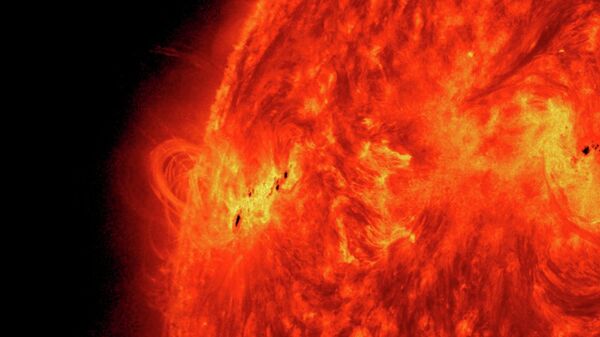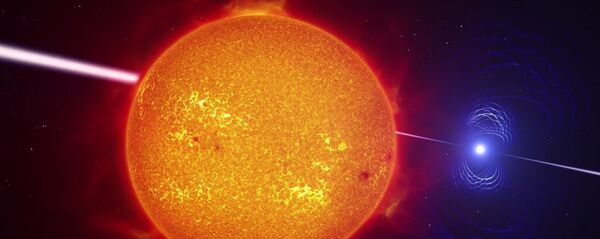Space weather experts warn that a geomagnetic storm could hit Earth this week after a powerful solar flare erupted from the Sun. The intense burst of radiation coming from the star was detected by the US National Oceanic and Atmospheric Administration (NOAA) on 16 August and although the agency said it wasn’t heading directly towards Earth, it could graze our planet’s magnetic field, which in turn may cause a geomagnetic storm.
Powerful solar flares can sometimes be accompanied by coronal mass ejections that could result in brownouts (drops in the voltage in the electrical power supply system), long-lasting power outages, and interference with radio communications. In addition, geomagnetic storms caused by solar flares and coronal mass ejections are detrimental to both human and robotic explorers, as they can disable satellites and affect astronauts working on the International Space Station as well as those on other space missions.
The NOAA estimates that the upcoming geomagnetic storm belongs to the G1 category, making it rather weak. The agency predicts that it will have minor effects on power grids and satellite operations.
Solar activity depends on the Sun’s magnetic field, which goes through a periodic cycle that takes 11 years. During this process, the star’s north and south poles switch places. The Sun becomes active at the midpoint of the cycle. For earthlings, this activity may result in blackouts and beautiful events like aurorae (commonly known as northern lights). Space weather physicist Dr Tamitha Skov has predicted that the upcoming geomagnetic storm could bring the northern lights to places in the United States such as Maine, Minnesota, and Washington.




